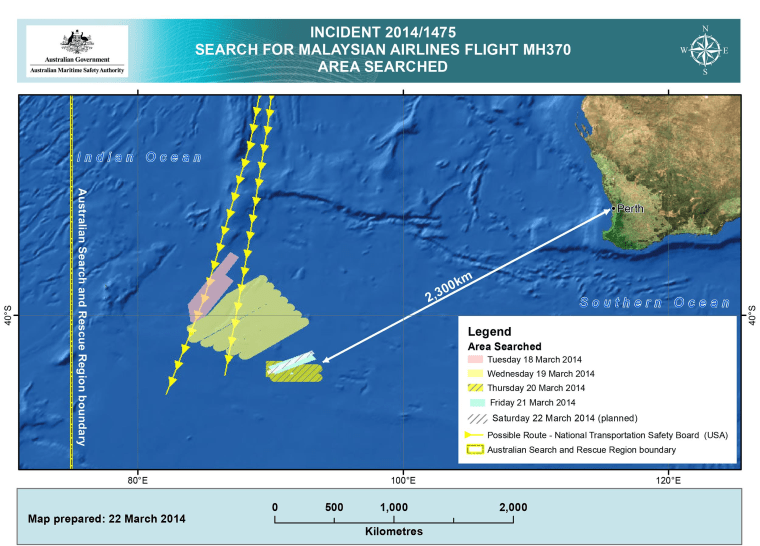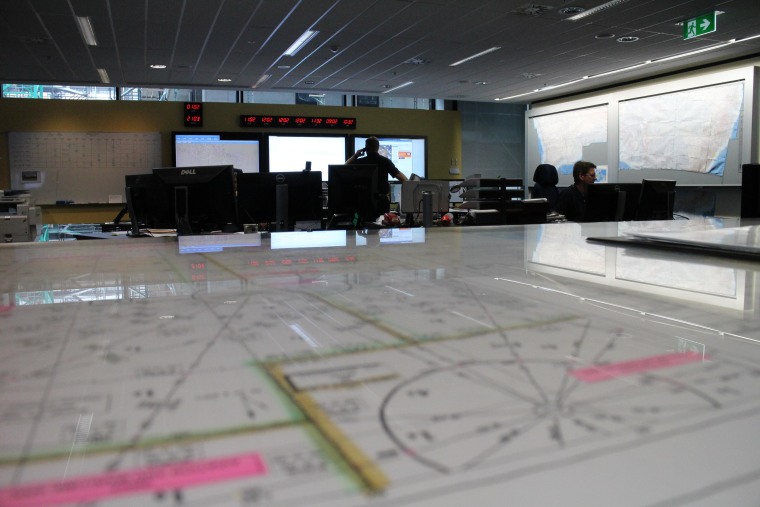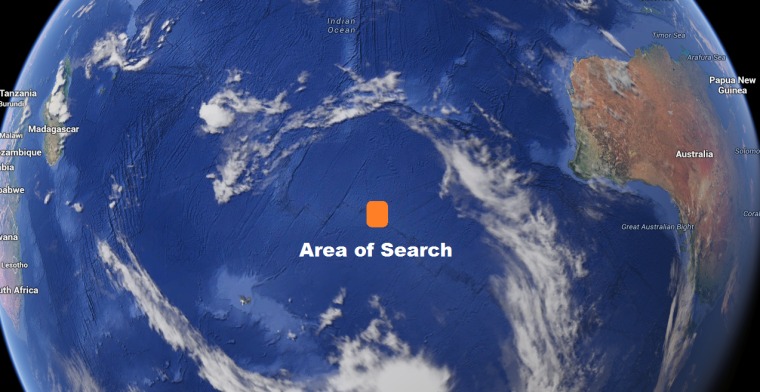A fleet of planes and ships set out Saturday on the third day of what has so far been a fruitless search for two mysterious objects that might help explain what happened to Malaysia Airlines Flight 370.
Three Australian air force P3 Orion aircraft, a New Zealand P3 Orion and two ultra-long-range commercial jets began taking off at 9 a.m. (6 p.m. ET Friday) to continue scouring a 22,300-square-mile area in the remotest reaches of the southern Indian Ocean — a choppy and windy seascape about 1,400 miles southwest of the Australian coast.
Two merchant ships are already in the vast search area, and they'll be joined later in the day by an Australian navy ship, the HMAS Success, the Australian Maritime Safety Authority said Saturday morning — all of them looking for two "indistinct" objects that were spotted in satellite imagery this week that might be related to the mysterious disappearance of the Beijing-bound jetliner two weeks ago.
The objects still haven't been found, so the area being searched was expanded Saturday. Hishamuddin Hussein, Malaysia's acting transportation minister, said the goal now is rule out some regions and eventually narrow the search to something more manageable.
"This is going to be a long haul, and the focus is to reduce the area of search and possible rescue," Hishammuddin said late Friday at a news conference in Sepang.


The search has — temporarily, at least — united nations across ideological and cultural borders.
U.S. jets flew over the area Thursday and Friday, and a U.S. P-8 will resume flying after a maintenance day Saturday, the Pentagon said. When they do, they'll be flying alongside two Chinese planes that are expected to arrive in Perth on Saturday and two Japanese P-3 Orions scheduled to arrive Sunday.
Malaysia's handling of the investigation into Flight 370's disappearance has strained relations between it and China, and the differences between Washington and Beijing are widely known. Meanwhile, Japan and China are fighting a diplomatic war of words over disputed islands in the East China Sea.
The U.S. said it has already spent more than $2.5 million on its part of the search effort, and NASA said Friday that it was joining the team, telling NBC News that "plans are underway" to target NASA satellites at the Indian Ocean search area.
The cooperative effort should help lessen the extreme difficulty of the search in what Australian Prime Minister Tony Abbott has called one of the most inhospitable locations on Earth.
Radar has been mostly useless, the Australian maritime agency said, so now the teams are relying on human spotters.
"We've got no radar detections," John Young, general manager of the agency's emergency response division, said in a video statement.
"We have re-planned the search to be visual, so aircraft are flying relatively low with very highly skilled and trained observers looking out of the aircraft windows and looking to see objects," Young said.

Ten State Emergency Service volunteers were aboard the long-range commercial jets dispatched Saturday, the agency said.
"We are doing all that we can, devoting all the resources we can, and we will not give up until all of the options have been exhausted," Warren Truss, who is acting as Australia's prime minister while Abbott is out of the country. told reporters.
Truss noted that the satellite images were five days old and said the objects could have sunk since then.
"It's also certain that any debris or other material would have moved a significant distance over that time, potentially hundreds of kilometers," he said.
The batteries of the jet's data-recording "black boxes" (which are actually orange) are expected to exhaust themselves in a little more than two weeks, but Hishamuddin, the Malaysian transportation chief, said the search would continue as long as was necessary.
"We will carry on until MH370 is found," he promised.
Julianne Pepitone of NBC News contributed to this report.
